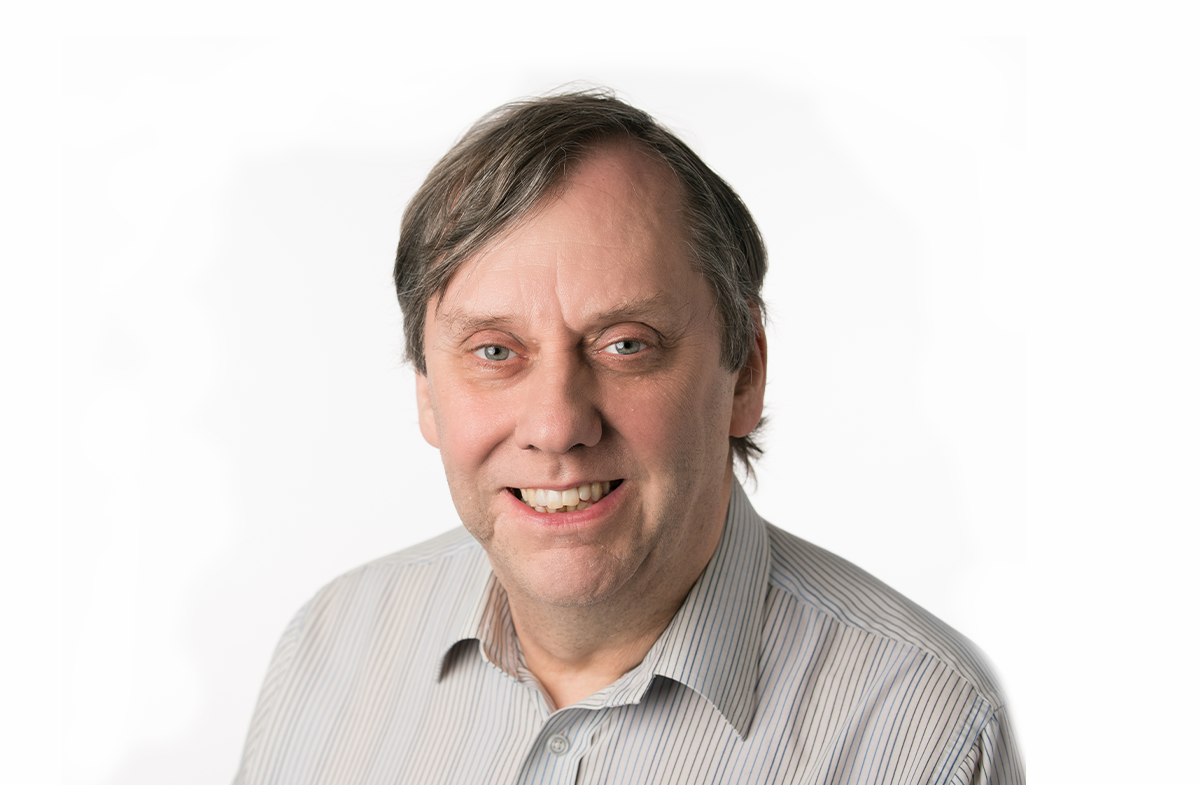
Tell us a little more about yourself, Chris
I’ve been married to Roberta for nearly 30 years, and have two children in their 20s – Lois, who’s studying Biochemistry at Glasgow Uni, and Peter, who’s working as a software consultant in Belfast.
Engineering is in my blood – my father was a professional electrical engineer, and my great-uncle worked for Harry Ferguson before emigrating to New Zealand and being awarded a patent for an electrical motor protection device. When I’m not working, I’m passionate about what we can learn from old technology, with a collection of old telephones and WWII-era military radio sets. I also enjoy mixing and editing live and recorded audio and video.
Can you tell us more about your professional background?
My degree from Queens University is in Electrical and Electronic Engineering, and I have a Doctorate in Computer Science on Speech Recognition – both achieved in years I care not to remember! Since qualifying, I have worked as a Hardware or Systems Engineer across various industries, including the automotive sector, medical electronics, telecoms, audio electronics, and analytical & comms equipment for the oil industry. My professional interests include analog and power electronics. I am a Chartered Engineer, and a member of the IET.
“My main responsibility is to be the go-to expert on ECG electrodes and be able to train and advise customers on how to pick up the optimum signal so that HeartKey can perform at its best.”
How would you define your job as a Technical Specialist at B-Secur?
I have been carrying out research into the following aspects including material size, shape, and finish of the electrodes – particularly the use of new materials and coatings in contact with skin. In addition, I use my hardware design experience as part of the hardware group in B-Secur, contributing to designs for ECG demonstrator devices, and reviewing different analog front-end components.
What initially attracted you to B-Secur?
I have always enjoyed learning new skills and meeting new challenges. Having had some experience with picking up ECG using dry electrodes, I was eager to deepen and expand my knowledge. Having worked in both large established corporations with more than 10,000 employees across the globe, and much smaller organisations with fewer than 30 employees in one or two locations, I knew what to expect from a new start-up. A small company has the ability to react quickly to changing circumstances, a big advantage over the slower momentum in multi-national corporations. There is always a chance to make a difference to the company and how it serves its customers and gain world-class experience in the process.
Professional Services is becoming a big part of B-Secur’s remit, why do you believe this is so?The science and implementation of electrodes spans many disciplines, from electronics and physiology to electrochemistry and material science. The ECG reading varies significantly across multitudes of people. Therefore, to make a product that works across a wide range of customers, it requires a deep understanding of the whole user.
The ECG software components that B-Secur specialise in work best with a good quality signal. Therefore, the end application has to consider the whole signal chain which includes the electrode-skin interface and the acquisition electronics.
“B-Secur has experience in each stage of the signal process. This starts with the ECG signal present at the chest, hands, or wrists of the subject, via the electrode system. It then carries through the acquisition hardware and is processed in the software application.”
The landscape of biometric technology and its applications is changing and expanding exponentially. How do B-Secur keep ahead with such fast-paced development?
The wearable biometric market is growing by the month with many new companies and their products appearing in the sector; B-Secur is making contracts with the large semiconductor manufacturers who help to ensure our visibility to the OEMs making the devices. The sales team contact manufacturers directly to keep our capabilities in their vision. Having the right feature set is vital, so the team is working in the background before their release, analysing research papers to ensure the correct functionality.
In addition, we have designed demonstration hardware, which has been trialled in hospitals and the wider community for data acquisition and analysis to validate and improve the current and impending features.
“The wearable biometric market is growing by the month with many new companies and their products appearing in the sector.”
As you look ahead in the next several years, what do you see as B-Secur’s priorities?
The next steps for B-Secur will be to address the different segments of the overall wearable sector and install HeartKey®’s ECG algorithms in many consumer products. Currently, we are working on an exciting project of getting both FDA certification and clinical approval for HeartKey® features. We’re working with textile and material producers to develop novel methods of measuring heart information.”